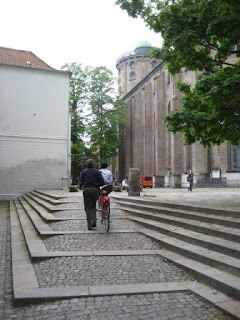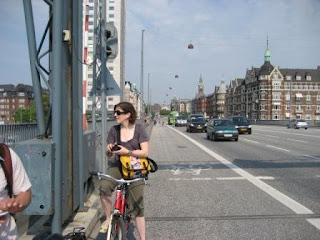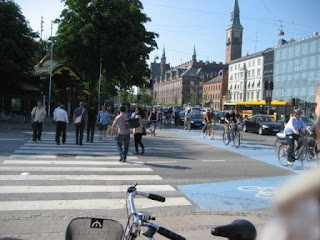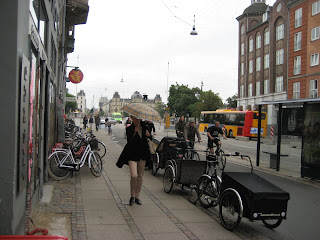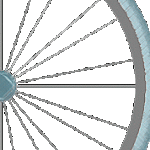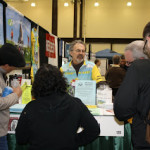Even though I’ve been back in Seattle for a week, my head and heart are still in Copenhagen, Denmark where I attended a study tour underwritten by the Scan/Design Foundation, and lead by i-Sustain . The weeklong tour was a guided whirlwind of the best bicycling practices in a city known for its world-class bicycle facilities and biking culture.
10 Lessons learned from the seat of my 3-speed red rental bike:
1) Think out of the car and beyond the oil barrel to energy independence. Denmark began planning for bikes, buses, trains, and subways during the oil crisis in the mid 1970s.
4) Arrive by bike, bus or train. When I asked a city employee how he got to the meeting, he replied, “by bus, we’re not allowed to drive to meetings.”
5) Separated facilities have fostered a 37% bicycling rate. Cycle tracks are a separate facility running on all major roads in Copenhagen. They parallel sidewalks, and traffic lanes. They have fostered a main street atmosphere with reduced noise levels.
6) Blue lanes through intersections coupled with a green light ahead of motorists has reduced traffic conflicts and collisions. The lanes clearly show the bicyclist where to ride, and gives motorists a visual cue to watch for both people on bikes and on foot.
7) Biking skills are taught to every school child. Red Cross and other non-profits teach bicycle skills to immigrants. Copenhagen is planning for a 50% bike ridership by 2015.
8) No lycra–just people riding in jeans, skirts, shorts, suits, dresses.




